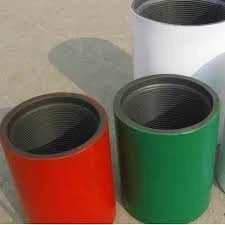- Afrikaans
- Albanian
- Amharic
- Arabic
- Armenian
- Azerbaijani
- Basque
- Belarusian
- Bengali
- Bosnian
- Bulgarian
- Catalan
- Cebuano
- Corsican
- Croatian
- Czech
- Danish
- Dutch
- English
- Esperanto
- Estonian
- Finnish
- French
- Frisian
- Galician
- Georgian
- German
- Greek
- Gujarati
- Haitian Creole
- hausa
- hawaiian
- Hebrew
- Hindi
- Miao
- Hungarian
- Icelandic
- igbo
- Indonesian
- irish
- Italian
- Japanese
- Javanese
- Kannada
- kazakh
- Khmer
- Rwandese
- Korean
- Kurdish
- Kyrgyz
- Lao
- Latin
- Latvian
- Lithuanian
- Luxembourgish
- Macedonian
- Malgashi
- Malay
- Malayalam
- Maltese
- Maori
- Marathi
- Mongolian
- Myanmar
- Nepali
- Norwegian
- Norwegian
- Occitan
- Pashto
- Persian
- Polish
- Portuguese
- Punjabi
- Romanian
- Russian
- Samoan
- Scottish Gaelic
- Serbian
- Sesotho
- Shona
- Sindhi
- Sinhala
- Slovak
- Slovenian
- Somali
- Spanish
- Sundanese
- Swahili
- Swedish
- Tagalog
- Tajik
- Tamil
- Tatar
- Telugu
- Thai
- Turkish
- Turkmen
- Ukrainian
- Urdu
- Uighur
- Uzbek
- Vietnamese
- Welsh
- Bantu
- Yiddish
- Yoruba
- Zulu
Bull Plug Pressure Rating - Understanding Specifications and Applications
Understanding Bull Plug Pressure Ratings
Bull plugs, often used in oil, gas, and other industrial applications, play a critical role in ensuring the safety and integrity of pipelines and equipment. One of the most crucial aspects of bull plugs is their pressure rating, which determines their capacity to withstand internal pressures without failing. This article explores the importance of pressure ratings, the factors influencing them, and the standards governing bull plug usage.
What is a Bull Plug?
A bull plug is a type of closure device used to seal off the ends of pipes or fittings. It is designed to prevent the escape of fluids, gases, or other materials under pressure. Bull plugs are commonly employed in various industries, including petrochemical, construction, and manufacturing, to ensure that systems remain sealed during maintenance, testing, or when not in operation.
Importance of Pressure Ratings
The pressure rating of a bull plug is vital for the safety and efficiency of any operation. It indicates the maximum pressure that the plug can safely contain. Using a bull plug with an inadequate pressure rating can lead to catastrophic failures, including leaks and ruptures, which pose severe risks to personnel, the environment, and infrastructure.
Pressure ratings are expressed in units such as psi (pounds per square inch), bar, or MPa (megapascals). Each application will have specific requirements based on the operating conditions, including temperature, fluid type, and pressure fluctuations. Understanding and adhering to the appropriate pressure ratings is paramount to maintaining system integrity and compliance with safety regulations.
Factors Influencing Pressure Ratings
bull plug pressure rating

Several factors influence the pressure ratings of bull plugs
1. Material Composition Bull plugs can be made from various materials, including steel, aluminum, and plastic. Each material has different properties under pressure. For example, steel bull plugs typically have higher pressure ratings than those made from plastic.
2. Temperature Temperature affects the material properties and behavior under stress. Higher temperatures can weaken materials, potentially reducing their pressure rating.
3. Design and Manufacturing Standards Regulations and standards established by organizations like the American National Standards Institute (ANSI) or the American Society for Testing and Materials (ASTM) dictate the design and testing of bull plugs. Adherence to these standards ensures safety and reliability.
4. Threading and Connectors The design of the threading and connectors affects how well the bull plug maintains a seal under pressure. Strain concentrators, misalignment, or improper installation can lead to weak points that compromise pressure ratings.
Conclusion
In conclusion, understanding the pressure rating of bull plugs is essential for anyone involved in industrial operations. Properly rated bull plugs contribute to the safety, efficiency, and reliability of systems by preventing leaks and failures under pressure. By considering material types, temperature effects, regulatory standards, and the design of connectors, operators can select the appropriate bull plugs for their applications, ensuring safe and efficient operations. Investing in high-quality bull plugs that meet or exceed necessary pressure ratings is a crucial step in any industry that relies on pressurized systems.
-
Tubing Pup Joints: Essential Components for Oil and Gas OperationsNewsJul.10,2025
-
Pup Joints: Essential Components for Reliable Drilling OperationsNewsJul.10,2025
-
Pipe Couplings: Connecting Your World EfficientlyNewsJul.10,2025
-
Mastering Oilfield Operations with Quality Tubing and CasingNewsJul.10,2025
-
High-Quality Casing Couplings for Every NeedNewsJul.10,2025
-
Boost Your Drilling Efficiency with Premium Crossover Tools & Seating NipplesNewsJul.10,2025







